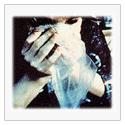|
|||||||||||||||||||
|
Types of Drugs
Inhalants
The toluene is the active ingredient of the glue, glue for model aircraft, lighter fluid, paint, gasoline, deodorant, hair spray, furniture cleaner and glass, nail polish, etc.. Inhalation of vapors released by the product causes effects similar to alcohol, as well as cases of hallucinations in large doses. Symptoms include euphoria, restlessness, confusion, disorientation, excitement and loss of motor coordination. Repeated inhalation may cause dizziness, trembling, changes in color perception, distortion of sense of time and space and sense of power or of great power. Overdose is characterized by nausea, vomiting, fatigue, muscle weakness, stomach pain, tremor, feelings of fear, loneliness and guilt, paralysis of cranial and peripheral nerves, delirium, unconsciousness and even coma. The action of toluene is due to its ability to depress the central nervous system. Medical reports released in the 60's claim that the drug causes permanent brain damage and may even kill the User, in addition to eroding the nasal membranes, destroying the bone marrow and damage the kidneys. The toluene can still induce violent impulses, lesions in the liver and respiratory organs, and blindness. The toluene can produce tolerance if used with a weekly frequency over a period of about three months, from which the User will need ever larger doses to achieve the same effect. Not known whether toluene causes physical dependence, but it is believed that users who inhale the substance most often subject to psychological dependence. Negative effects can be reversed with discontinuation of drug use. The ether, known scientifically as diethyl ether, was discovered in the 13th century, and is produced by dehydration of ethyl alcohol by sulfuric acid. By 1700, the European university began to consume ether recreationally in place to alcoholic beverages. In England, the use of ether as an intoxicant was very popular until the late 19th century, when the drug is now banned. Although outlawed, the ether remained popular among the English to use start to decline around 1920, when the alcohol has become cheaper and easier to acquire than ether. In the United States, the recreational use of ether had a brief surge in popularity between the years 1920 and 1933, when alcohol was banned by Prohibition. At the time, the soft drinks were mixed with ether to cause intoxication. Later, during World War II, the substance was too consumed in Germany to compensate for the lack of alcohol. In Brazil, the ether was the basic ingredient of inhalants, a carnival product that could be inhaled to produce euphoria and disinhibition. Although banned in 1961 by then President Quadros, the inhalants remained fairly widespread in the country, smuggled mainly from Argentina, where it is manufactured legally. The medicinal use of ether back to 1846, when the drug began to be inhaled as numbing. Moderate doses of ether depress the central nervous system, producing intoxicating effects. The use of ether can cause gastritis and even death in cases of overdose. The substance was applied as an anesthetic for surgeries and deliveries from 1847, proving itself capable of acting eight times faster and more powerfully than the ether. Over time, it was found that a drug overdose could cause sudden death from circulatory depression, which made the chloroform was gradually abandoned by doctors in favor of other anesthetic drugs. Due to its power, chloroform can be lethal if ingested orally in large amounts. |
||||||||||||||||||

 The category of drugs includes several inhalant substances, with three main toluene, ether and chloroform.
The category of drugs includes several inhalant substances, with three main toluene, ether and chloroform.